Today is April 26th (4/26) or as many of us, Mopar fans affectionately call it, HEMI Day! Of course, the reference comes from the legendary 7.0-liter (426 cubic-inch) HEMI V8 built from 1964 through the 1971 model year. Dubbed the “Elephant” due to its huge size and power output, the 426 HEMI became a legend on the street and track.
The Original Chrysler HEMI Engines (1940 to 1945) –
In 1940, Chrysler had begun the development of an engine called the XI-2220 used for aircraft. Designed to run upside down, the XI-2220 allowed for the use of nose-mounted weapons on aircraft of its time. The 16-cylinder turbo-supercharged liquid-cooled 60° inverted V aircraft piston engine was the first hemispherical cylinder head-designed engine by Chrysler and produced 2,500 horsepower at 3,400 rpm.
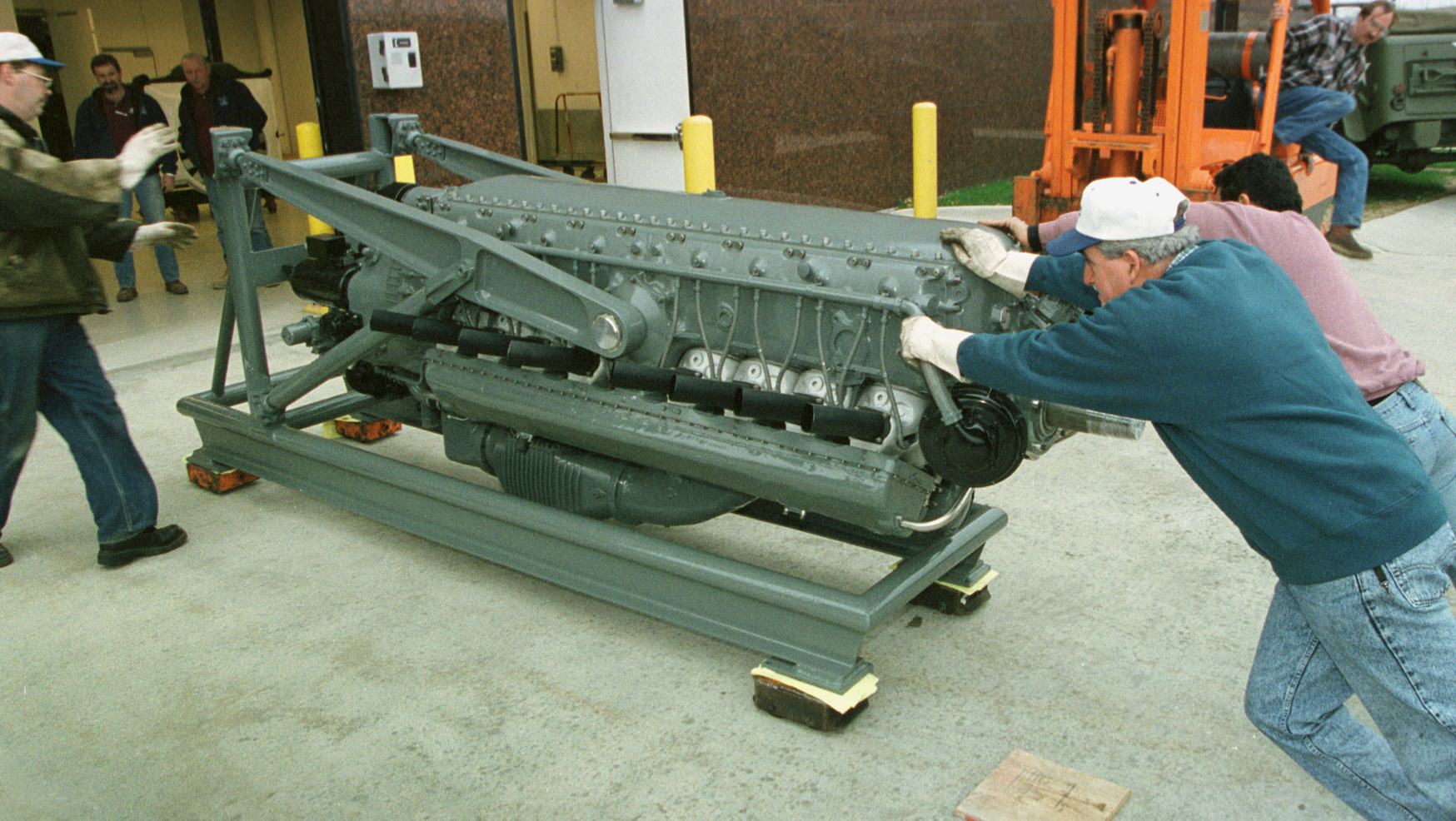
The first XI-2220 was mounted to a Republic P-47 Thunderbolt and took flight for the first time on July 26th, 1945. A second example was built for flight, however, World War II was coming to an end. After the war, the government scrapped its plans for the project, instead of looking at the upcoming “jet age” instead.
GEN I HEMI Engines (1951 to 1957) –
The Chrysler Corporation continued experimenting with hemispherical cylinder head design and in 1951, they came up with the first generation HEMI engines for its passenger car division. At the time, they weren’t called HEMIs with each brand under the corporate umbrella calling the motor something different. Chrysler called theirs the “FirePower” and it was available in 331, 354, and 392 cubic-inch variants between 1951 and 1959. The former DeSoto brand called theirs the “Fire Dome”, originally introduced in 1952 as a 276 cubic-inch engine and was subsequently enlarged to 291, 330, 341, and 345 cubic-inch displacements throughout its production period.
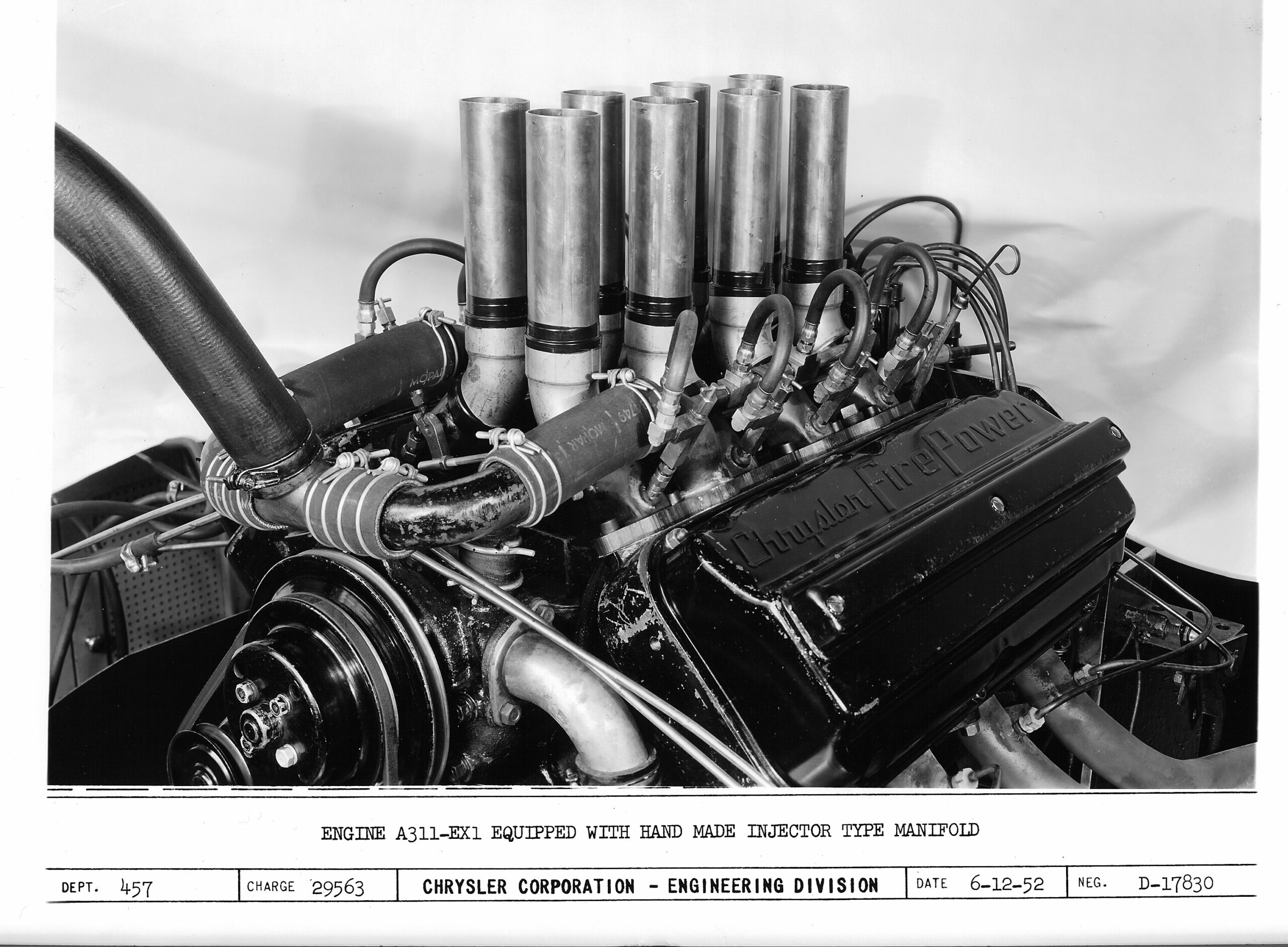
Dodge had two names for their hemispherical engine family, “Red Ram” for passenger car variants and “Power Dome” for Dodge Trucks. A 241 cubic-inch version was introduced in 1953, which was replaced in 1955 by a 270 cubic inch rendition. In 1956, Dodge again went bigger, increasing the engine size to 315 cubic-inches by going to a longer stroke and a taller raised deck block. This engine went away from the hemispherical head, but an optional “hotter” version of the engine had a hemispherical combustion chamber, larger valves, and a four-barrel carb. In 1957, Dodge released a new 325 cubic-inch engine, again the standard version had polyspheric cylinder head, while the high-performance offering came with hemispherical heads.
GEN II HEMI Engines (1964 to 1971) –
Six years after production ended on the first-generation HEMI engines, the Chrysler Corporation introduced the legendary 426 cubic-inch HEMI V8. For the first time officially wearing the HEMI name, this massive engine had a 10.72-inch deck height and a 4.8-inch bore spacing making it the largest engine in racing at the time of introduction. Originally produced for Chrysler’s National Association for Stock Car Auto Racing (NASCAR) program it was used it a racing version of the Plymouth Belvidere and was not available to the general buying public. The 426 was banned from the 1965 NASCAR season as it was not sold to the general public due to homologation rules of that time. This was remedied later in 1965, as Chrysler shoe-horned the engine into the popular Dodge Dart and Plymouth Fury models.
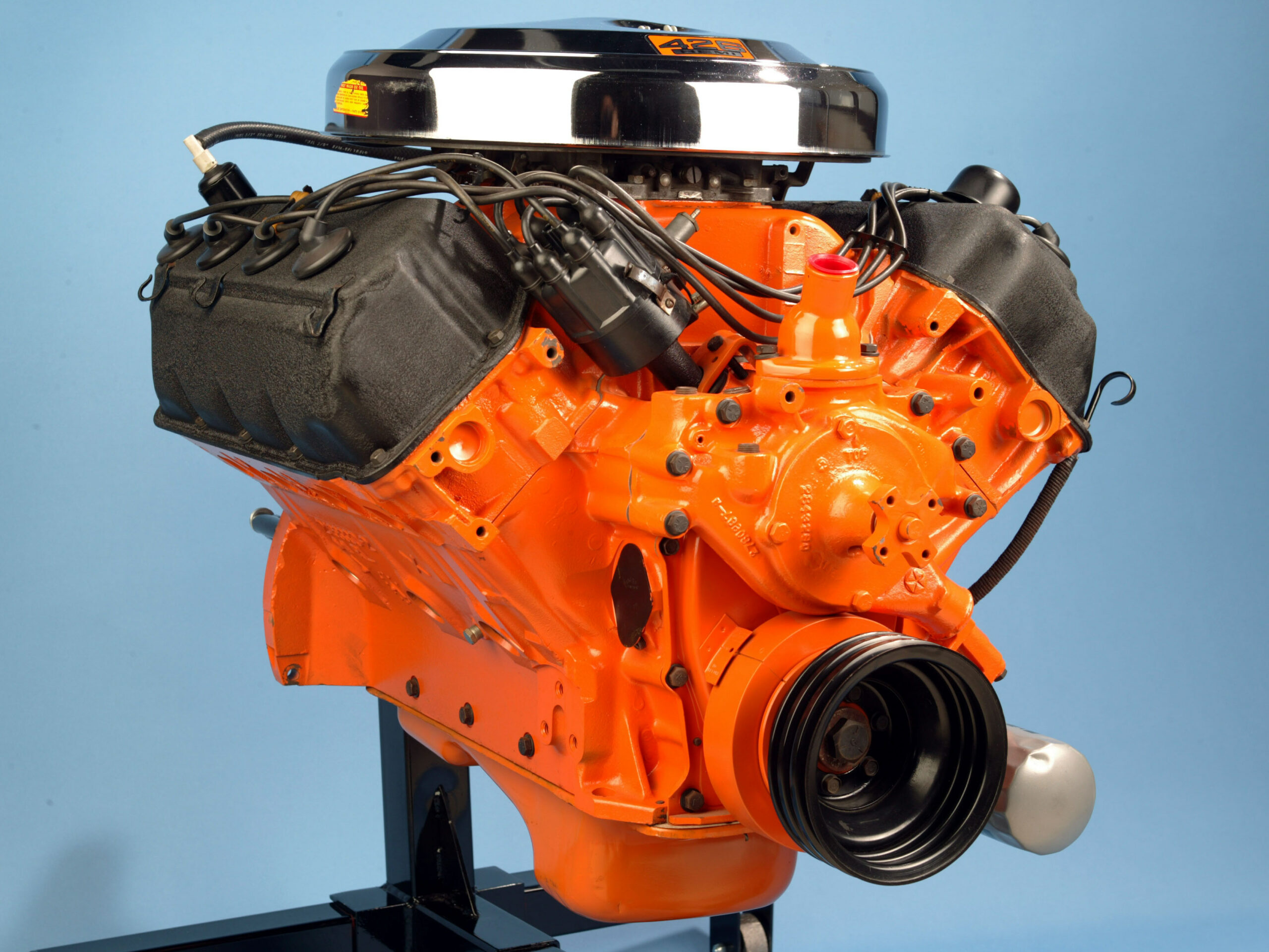
Also in 1964, Dodge then introduced the Dodge Coronet with aluminum fenders and bumpers with the HEMI under the hood built specifically for drag racing. The car debuted at the 1964 National Hot Rod Association (NHRA) U.S. Nationals in Indianapolis in the Super Stock class. Dodge and Plymouth both would later build the legendary factory turn-key HEMI Super Stock Dodge Dart and Plymouth Barracuda which continue to race today in specialty sanction races like the Dodge NHRA HEMI Challenge.

For the 1966 model year, Chrysler Corporation introduced the “Street HEMI” and it was available in a number of the company’s vehicles thus legitimizing its use on the NASCAR circuit and putting the Dodge and Plymouth brands on top of the muscle car map. The Street HEMI differed from the race version by having a lower compression ratio, a more streetable camshaft, and a pair of four-barrel Carter AFB carburetors. Even so, the Street HEMI was rated at 425 horsepower and 490 lb.-ft. of torque using SAE gross ratings. Only about 11,000 Street HEMIs were built for the public between 1966 and 1971.
All 426 HEMI engines were assembled at the Chrysler Marine plant in Marysville, Michigan, which today serves as a Mopar Distribution Center.
GEN III HEMI Engines (2003 to Present) –
Today, the modern-day HEMI engines continue that legacy in many of the Chrysler, Dodge, Jeep®, and Ram Truck products that we have in our driveways and garages. While the modern HEMI engines feature flatter and more complex heads, the new HEMI engines no longer feature combustion chambers that are truly hemispherical. Modern-day HEMI engines use a coil-on-plug distributor-less ignition system and two spark plugs per cylinder to shorten flame travel leading to more consistent combustion and reduced emissions.
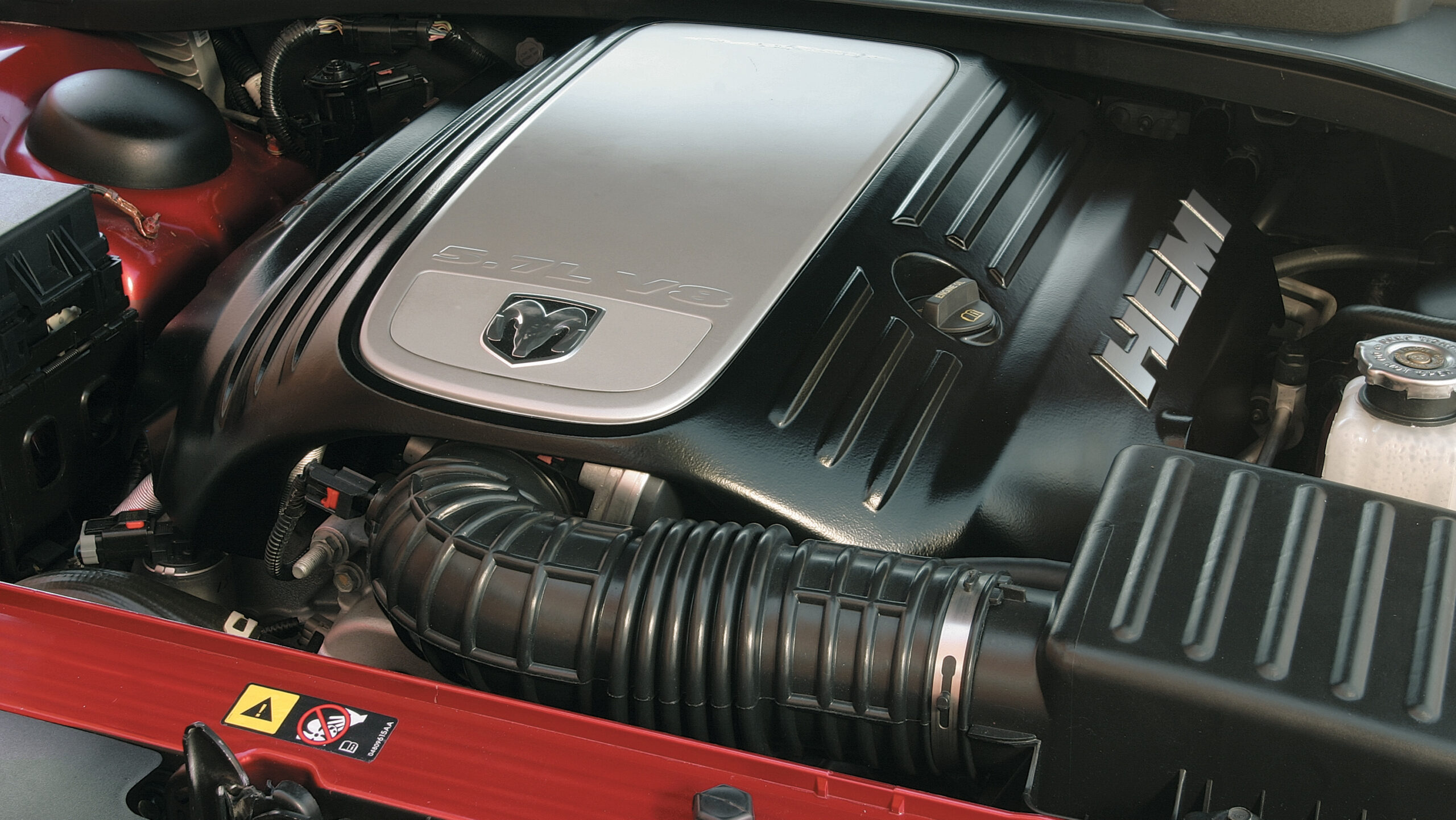
Starting in 2003, the Ram 2500/3500 Heavy Duty trucks introduced the new modern 5.7-liter HEMI “Magnum” V8. This engine replaced the old LA-based 5.2-liter (318 cubic-inch) and 5.9-liter (360 cubic-inch) Magnum V8 engines which were no longer competitive compared to the new offerings from competitors General Motors (GM) and Ford Motor Company. Chrysler Group had just designed a modern 4.7-liter SOHC “Magnum” (Power-Tech for Jeeps) V8, which was relatively expensive to produce and was still out-powered by its rivals.
The new 5.7-liter (345 cubic-inch) HEMI V8 developed 345 horsepower and 375 lb.-ft. of torque, outpowering the outgoing 5.9-liter “Magnum” V8 by 100 horsepower and 40 lb.-ft. of torque, while being more fuel-efficient.

The 5.7-liter HEMI was such a huge hit, it has been available in a variety of products since 2003 from trucks, to SUVs, to passenger cars. Over the years, the 5.7-liter HEMI has been refined and in 2009 it received a significant update with Variable Camshaft Timing (VCT). VCT which is Chrysler’s way of essentially saying variable valve timing uses an oil control valve that controls oil flow to a unique camshaft sprocket that contains a phasing device, which depends on the operation of the oil control valve either advances or retards the camshaft timing.
Since the mid-2000s, the Chrysler Group has named their engines after war-based aircraft with 2009 to present 5.7-liter HEMI V8 engines being dubbed the “Eagle” after the McDonnell Douglas F-15 Eagle.

Shortly after the launch of the 5.7-liter HEMI V8, an SRT-tuned 6.1-liter (370 cubic-inch) HEMI V8 version made its way under the hoods of the company’s Street & Racing Technology (SRT) portfolio. While many people think that the 6.1-liter HEMI V8 is just a larger displacement 5.7-liter HEMI V8, they would be wrong. The 6.1-liter HEMI V8 featured a different block than the 5.7-liter, which had revised coolant channels and oil jets to cool the pistons. A forged crankshaft strengthened connecting rods, and lighter pistons added to the engine’s durability.
The 6.1-liter HEMI V8 also featured a cast aluminum intake manifold which was tuned for higher rpm. This did not include variable-length technology. The 6.1-liter HEMI also did not feature the Chrysler fuel-saving “Multi-Displacement System” or MDS that the 5.7-liter HEMI used in certain versions to shut off two cylinders on each bank under light load to improve fuel economy.
The 6.1-liter HEMI V8 produced 425 horsepower and 420 lb.-ft. of torque.
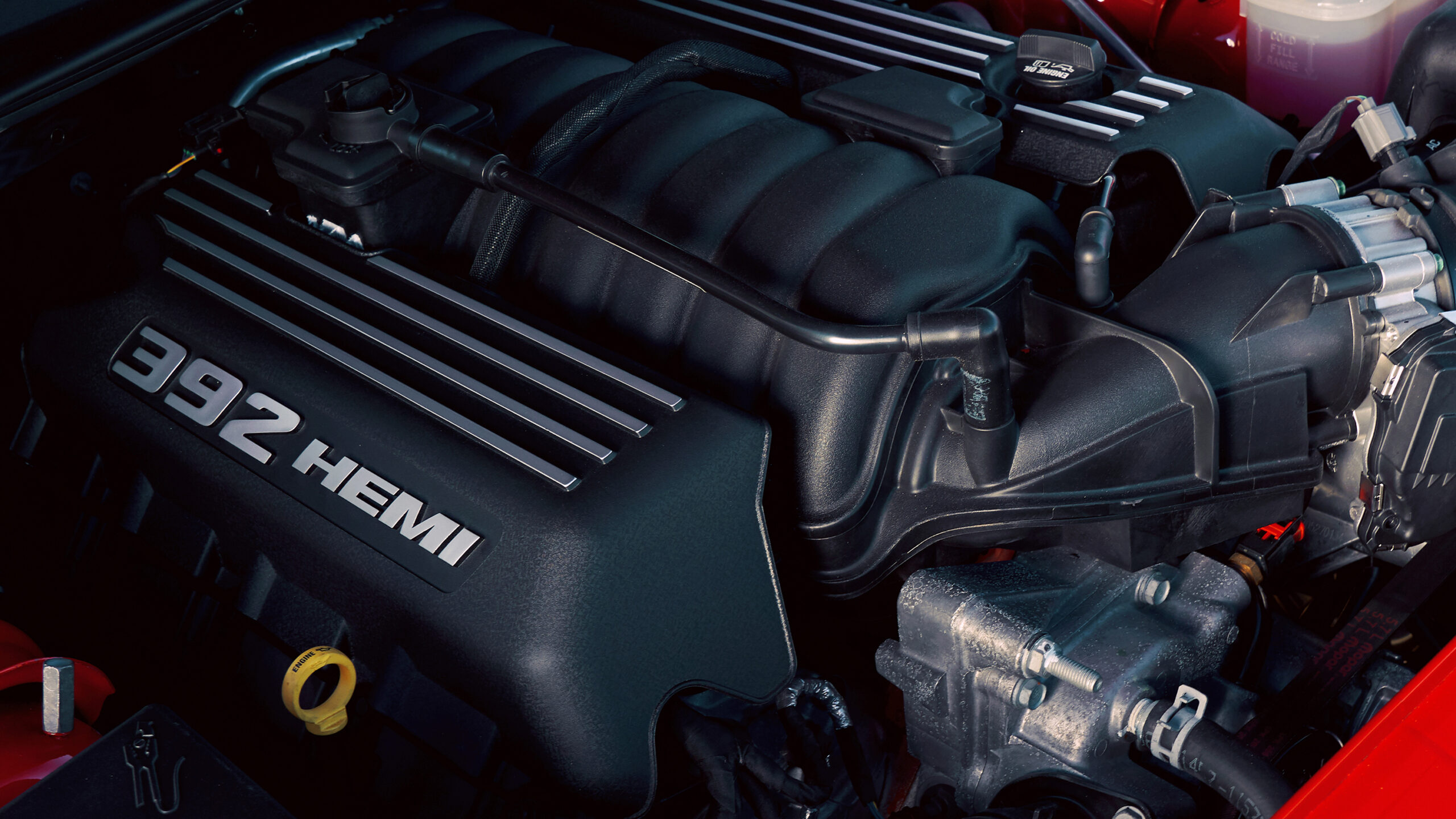
In 2011, the 6.1-liter HEMI V8 was replaced by a new 6.4-liter (392 cubic-inch) HEMI V8 codenamed the “Apache” after the Boeing AH-64 Apache attack helicopter. The engine was launched on the 2011 Dodge Challenger SRT8 and offered with variable camshaft timing as well as MDS in cars with an automatic transmission. The Apache delivers 470 to 485 horsepower and 470 lb.-ft. of torque, depending on the application.
Originally only available on the Chrysler Group’s SRT8 portfolio of vehicles, Dodge changed that by introducing the 2015 Dodge Charger and Challenger R/T Scat Pack models. The two cars have been the bread and butter of the Dodge//SRT brand’s transformation into a full performance brand and since have opened the engine up to several other applications including the all-new 2021 Jeep Wrangler Unlimited Rubicon 392 and the all-new 2022 Jeep Grand Wagoneer.
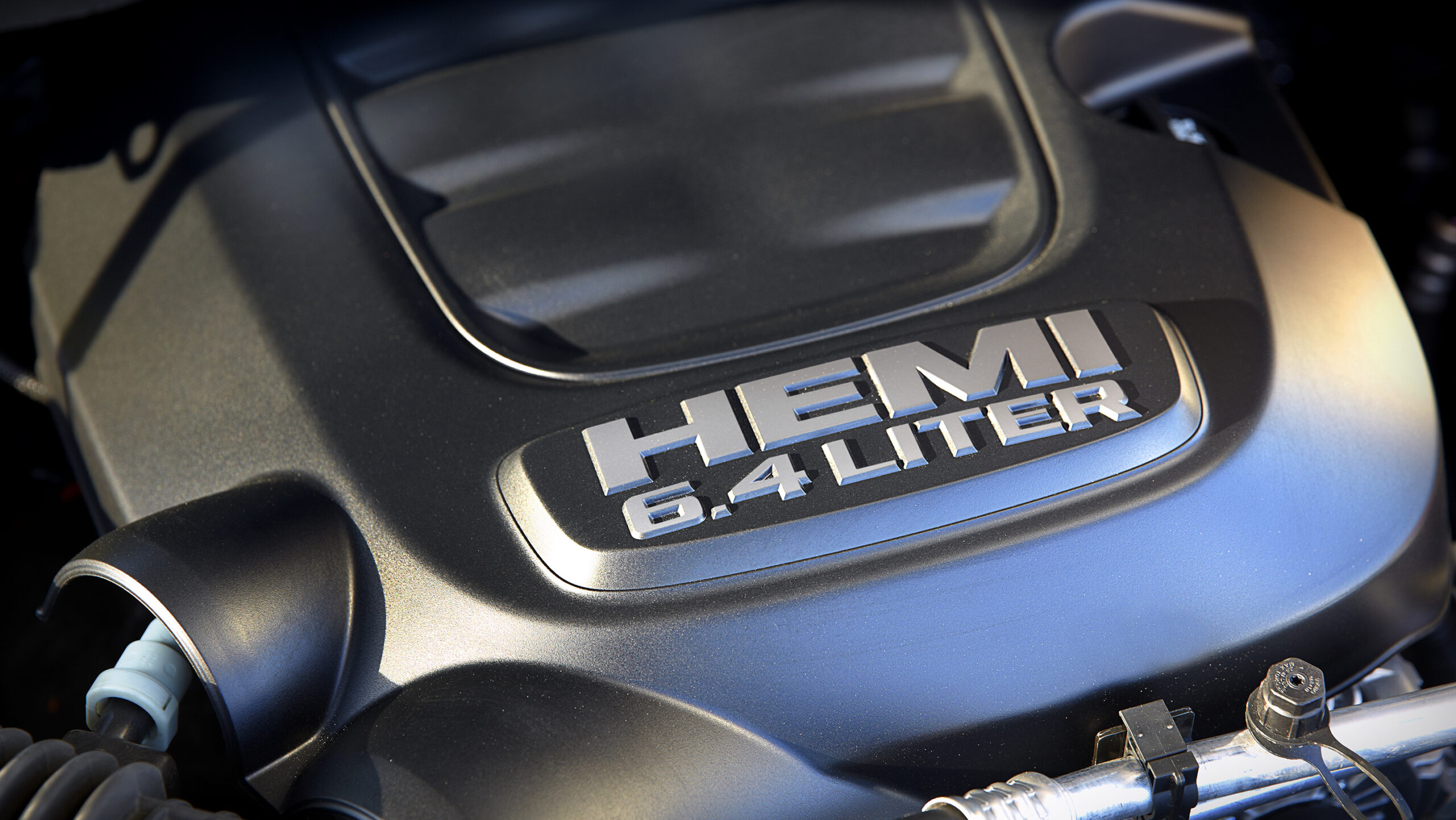
There is another version of a 6.4-liter (392 cubic-inch) HEMI V8 also in production, which is commonly called the “Big Gas Engine” or “BGE”. It made its debut in 2014 and is only available for the Ram brand’s Heavy Duty and Chassis Cab trucks. The BGE has been tuned for better fuel economy and a powerband more suitable for heavy hauling and towing than its “Apache” counterpart. This version has several different outputs ranging from 366 to 410 horsepower and 429 lb.-ft. of torque.
In 2015, Chrysler Group stunned the world by introducing the supercharged 6.2-liter (376 cubic-inch) HEMI “Hellcat” V8. Named after the Grumman F6F Hellcat, the HEMI Hellcat V8 produced 707 horsepower and 650 lb.-ft. of torque. It was Chrysler Group’s first application of V8 supercharger technology, featuring a forged steel crankshaft with induction-hardened bearing surfaces. The result was a crank so well-engineered it can withstand firing pressures of 110 bar (1,595 psi).
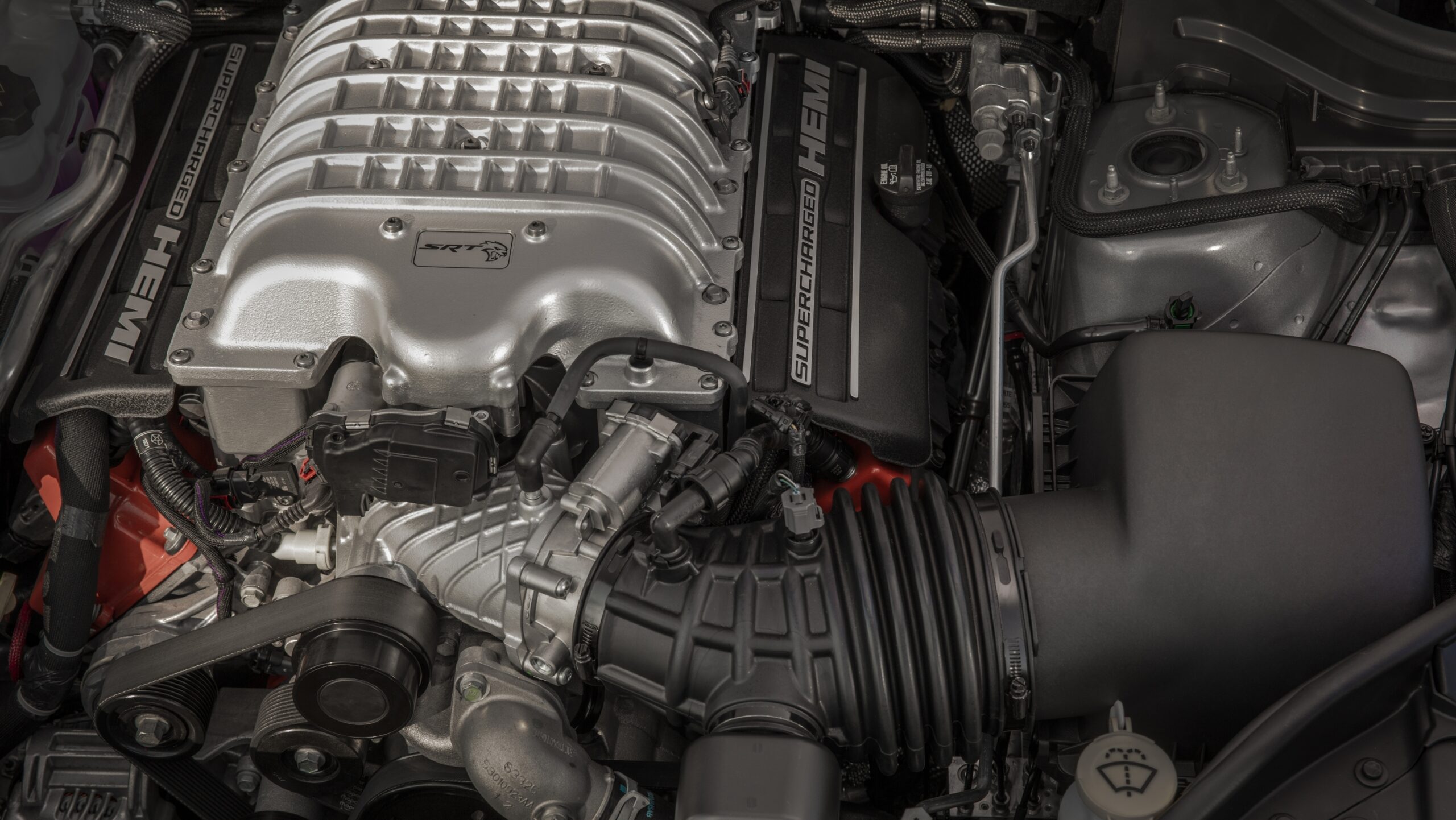
High-strength, forged-alloy pistons, developed using advanced telemetry measurement, were coupled to powder-forged connecting rods with high-load-capacity bushings and diamond-like-carbon-coated piston pins. The supercharged HEMI Hellcat V8 features premium-grade, heat-treated aluminum-alloy cylinder heads, which were optimized for superior thermal conductivity and its die-cast aluminum rocker covers are even HEMI Orange.
Since its debut, the Hellcat has been featured in numerous vehicles in the lineup and features horsepower ratings from 702 to 717 horsepower depending on the application.
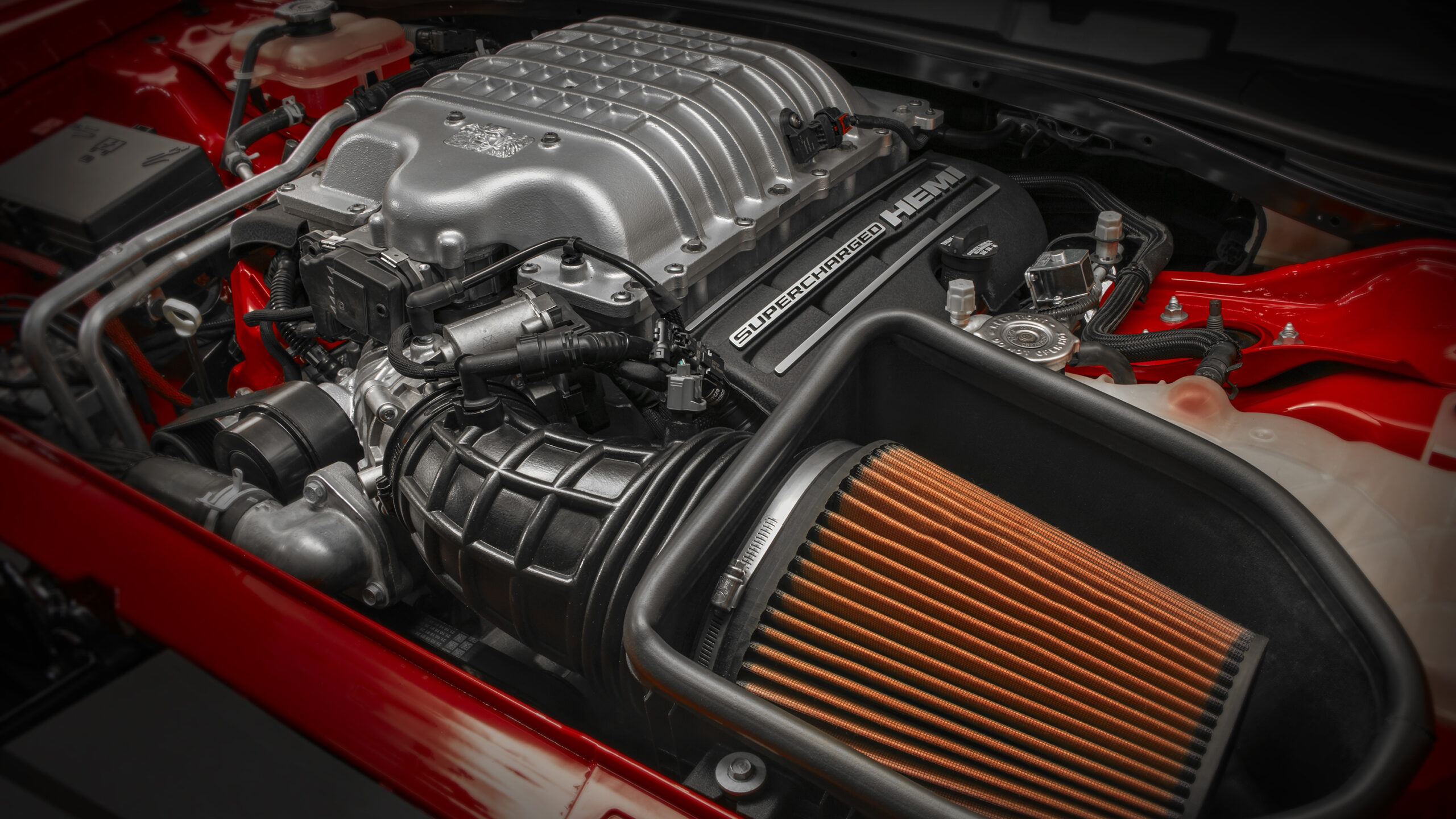
In 2018, Dodge//SRT released the 840 horsepower Dodge Challenger SRT Demon, a street-based drag-racer that continues to be the fastest accelerating gasoline production car ever. Named after the McDonnell F3H Demon, this supercharged 6.2-liter HEMI H.O. V8 has 25 major component upgrades, including a larger supercharger, strengthened connecting rods and pistons, high-speed valvetrain, fuel injection system, and improved lubrication system.
Those who bought a 2018 Dodge Challenger SRT Demon, could purchase a “Demon Crate” from Dodge//SRT, which featured things like a performance powertrain control module with high-octane engine calibration, replacement switch module containing a high-octane button, and a conical performance air filter. This would allow the customer to run 100+ octane fuel in the car, needed to produce 840 horsepower. Without the use of high-octane, the Demon was rated at 808 horsepower and 707 lb.-ft. of torque.
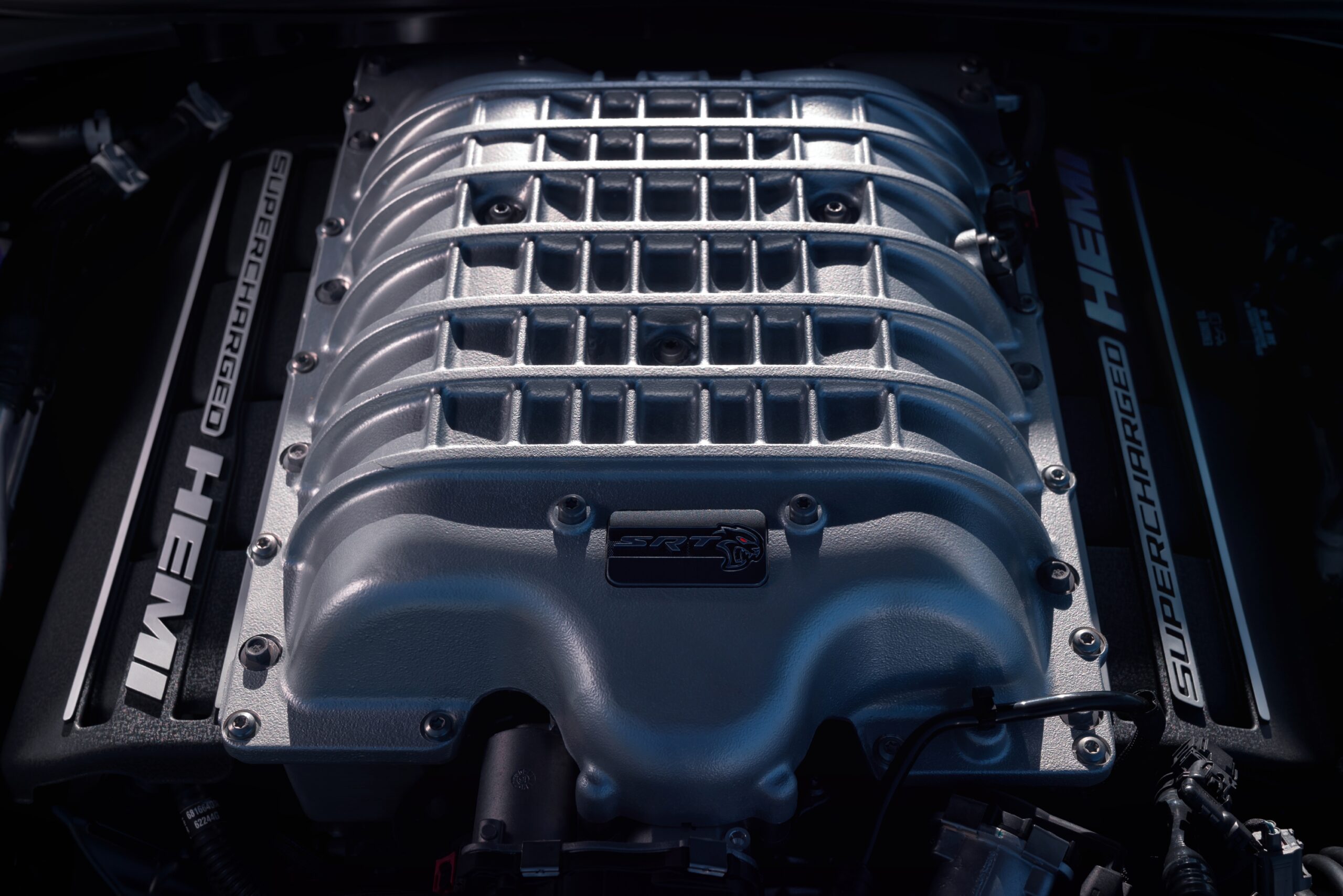
After the production run of the Demon was completed, Dodge//SRT rereleased the engine in a non-drag racing-oriented package for the Challenger. This package is called the “Hellcat Redeye”, as Dodge//SRT markets the car as a Hellcat possessed by the “Demon”. The Redeye version is basically the same as the Demon without high-octane mode, however, it is tuned to 797 horsepower as the car has been remapped to perform smoother on the street for everyday driving.
In late 2020, a new drag racing-oriented package would appear in the form of the Challenger SRT Super Stock. Virtually identical to a 2018 Dodge Challenger SRT Demon, except for the high-octane mode and trans brake feature the SRT Super Stock is rated at 807 horsepower, 1 horsepower less than the non-high-octane rating of the Demon. It was done to make sure that Demon owners could feel special about their limited edition cars.
The Redeye treatment was then dealt to the Dodge Charger in 2021, creating the most powerful and fastest mass-produced sedan in the world.

The Mopar brand stampeded into the Specialty Equipment Market Association (SEMA) Show with its supercharged 426 cubic-inch “Hellephant” Mopar Crate HEMI engine back in 2018. The crate engine cranks out a mammoth 1,000 horsepower and 950 lb.-ft. of torque. The Hellephant of course gets its name from the original 426 HEMI and its predecessor the Hellcat.
The Mopar “Hellephant” 426 Supercharged Crate HEMI Engine hits the magical 1,000 horsepower mark via bulked-up displacement, with 4-inches of stroke and bore specs at 4.125-inches. A 3.0-liter supercharger with a high-efficiency rotor set is mounted on the all-aluminum block. The choice to use aluminum delivers significant weight savings to keep the “Hellephant” light.
Mopar only offered up a few dozen of these engines, however, there are several suppliers who have insisted that they can still order them if needed. The cost of engines is right about the $30,000 mark, making it not only rare but expensive as well.
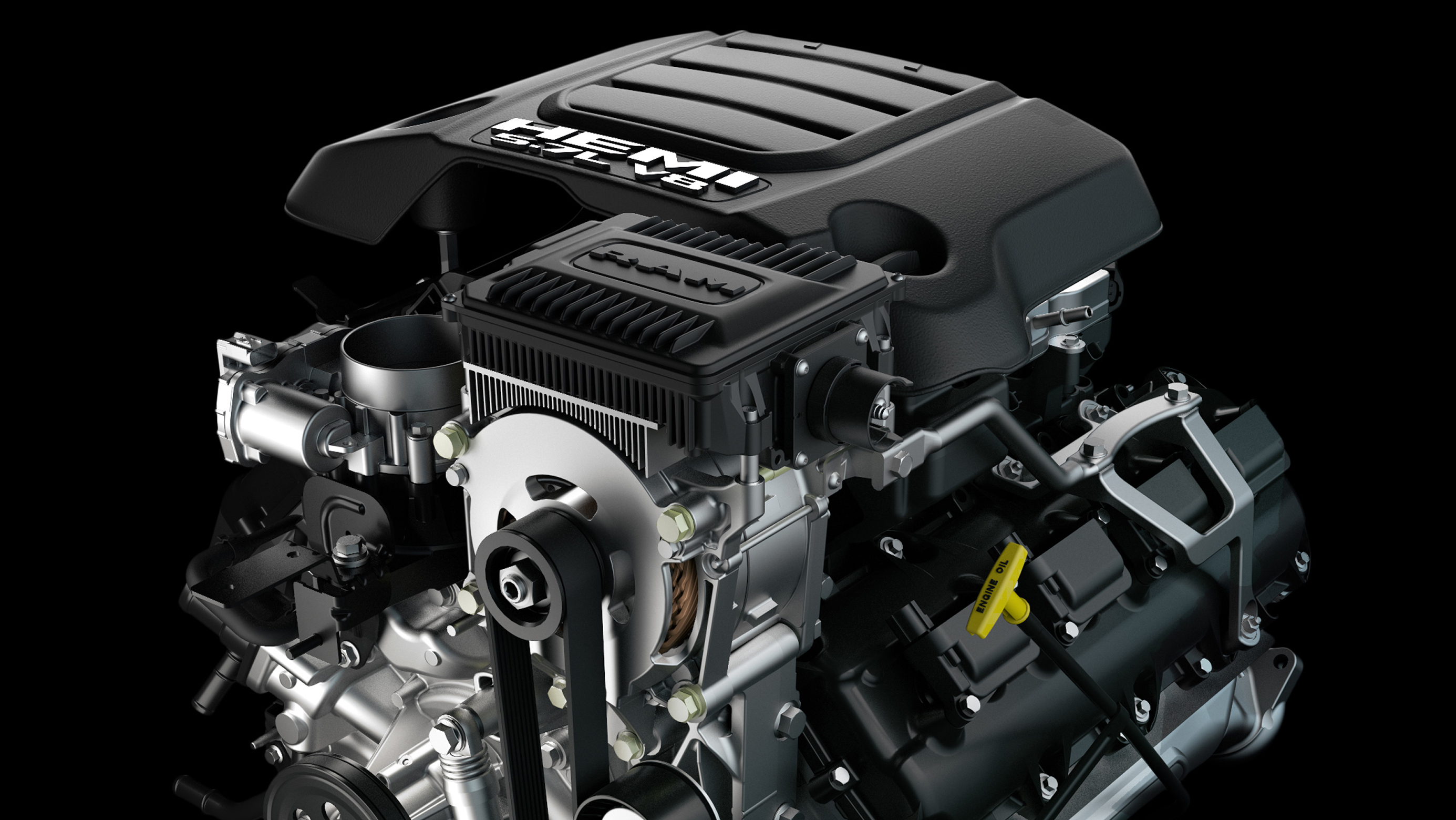
Despite growing emissions and regulations, the HEMI has continued on. Today’s 5.7-liter HEMI V8 continues to power several Chrysler Group products, but with more “electrified” technology like the eTorque mild-hybrid system under the hood of the Ram 1500, it has helped met those important government standards.
The eTorque mild-hybrid system replaces the traditional alternator on the engine with a belt-driven motor generator unit that performs several functions. The motor-generator unit works with a 48-volt battery pack to enable quick and seamless start/stop function, short-duration torque addition to the engine crankshaft in certain driving situations, and brake energy regeneration, which improves responsiveness and efficiency.
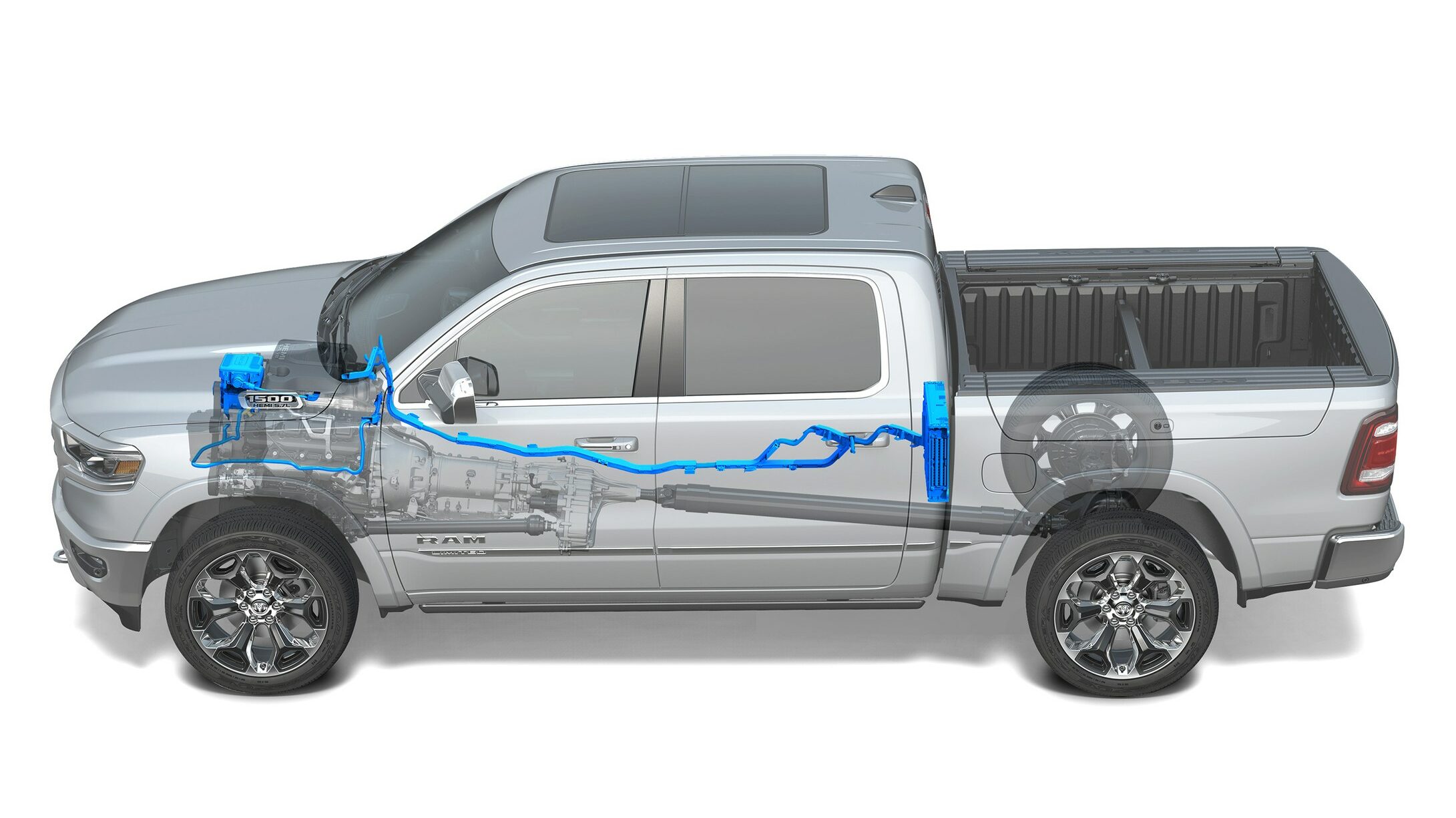
With the engine running, eTorque’s motor generator unit feeds a 48-volt current to a 430 watt-hour lithium-ion Nickel Manganese Cobalt (NMC)-Graphite battery. The small-suitcase-sized, air-cooled battery pack mounts to the rear wall inside the vehicle’s cabin.
In addition to spinning the engine for restarts, the eTorque unit also recaptures energy during deceleration and braking to feed charge to the battery pack.
With the recent announcement of the new twin-turbocharged 3.0-liter “Hurricane” inline-six-engines, there has been talk about the HEMI engine eventually being replaced by the Hurricane lineup. We have seen that the new engines will be optional on the standard wheelbase Wagoneer/Grand Wagoneer (WS) and standard across their longer-wheelbase variants. A sign that the times are changing.
What is your favorite HEMI engine? Let us know below or on the MoparInsiders forums.

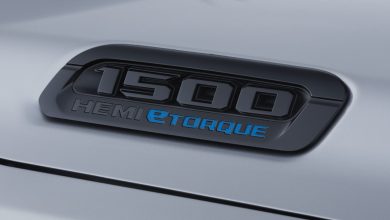
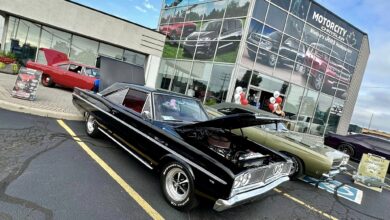

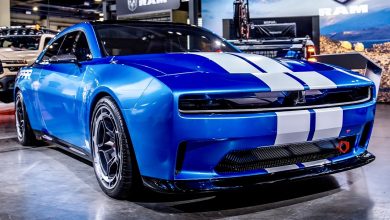
No replies yet
Loading new replies...
Join the full discussion at the Mopar Insiders Forum →